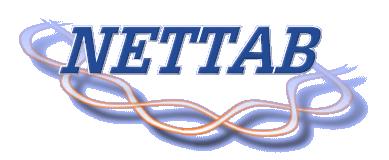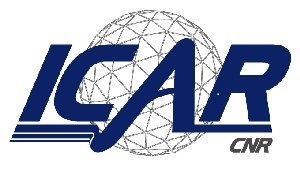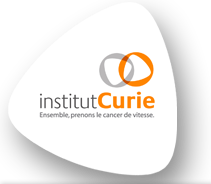Elixir-IIB/NETTAB Tutorial on Biological Networks: data analysis, visualization and medical application [closed]
| - | |
 |
 |
 |
 |
IMPORTANT DATES
- Course date: 18-19 October 2017
- Deadline for applications:
- early registration: September 23, 2017
- on-line registration: October 8, 2017
A maximum of 25 candidates will be accepted in the course. Priority will be given to NETTAB workshop participants on a first-come/first-served policy. For the participants ONLY to the tutorials, those with an adequate profile will be accepted immediately, especially if they come from other countries (to allow them to find reasonably cheap flight tickets).
PLEASE REGISTER HERE
VENUE: Istituto di Calcolo e Reti ad Alte Prestazioni (ICAR-CNR) of the Italian National Research Council, via Ugo La Malfa, 153, Palermo, Italy.
FEE: no fee
Instructors
- Luana Licata - Bioinformatics and Computational Biology Unit - Molecular Genetics Laboratory - Dept. of Molecular Biology, University of Rome Tor Vergata, Italy.
- Alberto Calderone - Bioinformatics and Computational Biology Unit - Molecular Genetics Laboratory - Dept. of Molecular Biology, University of Rome Tor Vergata, Italy.
- Inna Kuperstein - Computational Systems Biology of Cancer group, Institut Curie, Paris, France.
Organisers
- Luana Licata (ELIXIR-IIB Training Team and University of Rome Tor Vergata, Italy)
- Alberto Calderone (University of Rome Tor Vergata, Italy)
- Inna Kuperstein (Institut Curie, Paris, France)
- Allegra Via (ELIXIR-IIB Training Coordinator, IBPM-CNR, Italy)
Course Description
Participants in the course will be introduced to protein-protein interactions, biochemical reactions and causal interactions field. During the course the participants will be exposed to the literature curation principles and methods. In addition, there will be a session dedicated to common standards and ontologies adopted to describe data retrieved from the literature in a formalized manner. A large number of molecular interaction resources and methodologies to analyze them will be introduced during hand-on sessions.
Participants will get a general understanding of network construction, data analysis and modelling in bio-medical research. In particular, participants will be involved in hands-on session where they will be asked to analyse a dataset in the context of network analysis and modelling. Students will develop an understanding not only on static networks but also on discrete and continuous dynamical networks and how to simulate basic systems in order to derive meaningful information related to cancer.
The opening and closing lectures will be open and free to everyone but require application.
Practical sessions are limited to 25 participants.
Target audience
PhD students, postDoc and PIs in Life Sciences, Biomedicine and Bioinformatics with little or no knowledge of network biology tools, who are interested in learning how to apply such tools in their research.
Learning objectives/outcomes
Participants will gain an understanding of:
- protein interaction, biochemical reactions networks and pathway resources
- tools and standards for literature curation and network construction
- methods of network-based data analysis
- different approaches of mathematical modeling of networks
They will also learn:
- how to perform biological network reconstruction, visualization, and analysis
- how to integrate and visualize multi -omics data
- how to perform pathways enrichment
- applications in bio-medical research
Course prerequisites
Knowledge of the following concepts: proteins, protein-protein interactions, pathways, ignaling data. Basic computer skills
Programme
Wednesday 18th Oct 2017 |
|||
| 14:00-14:50 | Course opening | Participants’ self-presentations | |
| 14:50-15:05 | Opening lecture | L. Licata | Course Introduction |
| Session 1: Protein interaction networks and pathway resources | |||
| 15:05-15:25 | Lecture | L. Licata | IMEx Resources |
| 15:25-15:45 | Coffee break | ||
| 15:45-16:15 | Lecture | L. Licata | Pathways resources: SIGNOR and Reactome |
| 16:15-16:45 | Lecture | A. Calderone | Introduction to Biological networks |
| 16:45-18:00 | Practical | A. Calderone and L. Licata | How and where to collect data to build networks |
Thursday 19th Oct 2017 |
|||
| Session 2: Analyzing biological networks to understand human disease | |||
| 09:00-09:30 | Lecture | A. Calderone | Modelling biological system: static, discrete and continuous |
| 09:30-11:00 | Practical | A. Calderone | Static Networks and Boolean Networks (Cytoscape and GINsim) |
| 11:00-11:20 | Coffee break | ||
| Session 3: From network construction to data analysis and interpretation in cancer | |||
| 11:20-11:50 | Lecture | I. Kuperstein | Tools and standards for network construction |
| 11:50-13:00 | Practical | I. Kuperstein | Network construction using standards: small example of texts from different papers on signalling that have to be represent in a form of network in CellDesigner |
| 13:00-14:00 | Lunch | ||
| 14:00-14:20 | Lecture | I. Kuperstein | ACSN as cancer signaling encyclopedia |
| 14:20-14:40 | Lecture | I. Kuperstein | RECON2 as metabolic pathways resource |
| 14:40-15:00 | Lecture | I. Kuperstein | NaviCell and NaviCom |
| 15:00-15:30 | Practical | I. Kuperstein | Data visualization and analysis in the context of network (ACSN and RECON2): perform enrichment test in NaviCell, visualize multi-level omic data, compare samples, groups, retrieve deregulated processes |
| 15:30-15:50 | Coffee Break | ||
| 15:50-16:10 | Lecture | I. Kuperstein | Tools for network manipulation (BiNoM) |
| 16:10-16:50 | Practical | I. Kuperstein | Structural analysis of network in BiNoM: perform path analysis, model reduction, network of modules, network merging using small example network |
| 16:50-17:10 | Closing Lecture | I. Kuperstein | Networks applications in cancer medicine |
| 17:10-17:30 | Wrap-up and feedback | ||
ELIXIR-IIB member institutions
- CNR (ELIXIR-IIB coordinator)
- CRS4
- CINECA
- Fondazione Edmund Mach, Trento
- INFN
- GARR
- Sapienza Università di Roma
- Università di Bari
- Università di Bologna
- Università di Firenze
- Università di Milano
- Università di Milano Bicocca
- Università di Padova
- Università di Parma
- Università di Roma "Tor Vergata"
- Università di Salerno
- Università della Tuscia